Cherry Profile
Written by Joy
Nov 06 2020
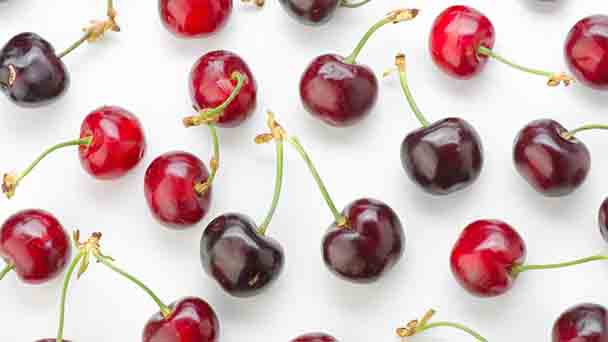
Cherry is the collective name of several plants of Rosaceae and Sakura. There are only 4 types of cherries that are cultivated in the world, namely cherries, sweet cherries, sour cherries, and cherries. Among them, cherries, sweet cherries, and sour cherries play an important role in the production. This plant belongs to trees or shrubs, with a height of 2-25 meters, and its bark is gray-white or dark-brown. Branchlets gray-brown or gray-brown, twigs green, glabrous or sparsely pilose. Winter buds are oval and glabrous. The leaf blades are ovoid, elliptical, or oblong-ovate, the apex is sharply pointed or shortly acuminate, and the base is round or wedge-shaped. The inflorescence is umbel-shaped, with 3-4 flowers, with the same flower and leaves; the peduncle is 0.8-3.4 cm long, sparsely pilose or glabrous; the sepals are triangular-ovate or ovoid-oblong, and the apex is obtuse or acute. Cherry petals are white or pink, obovate. The drupe is nearly spherical or ovoid, red to purple-black, 0.9-2.5 cm in diameter. The flowering period of cherries is from March to May, and the fruit period is from May to September.
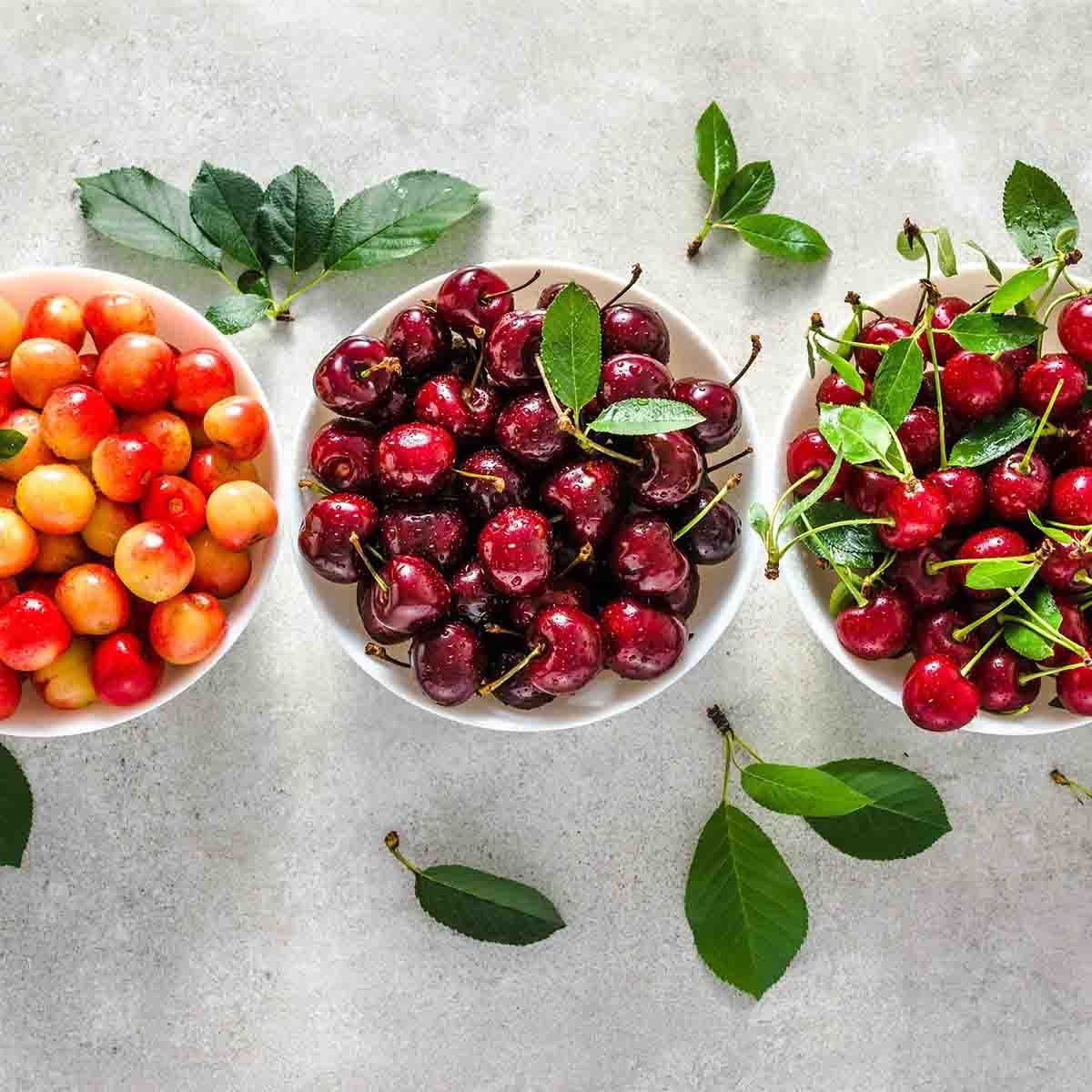
Cherries have been cultivated for a long time in China, and there are many varieties, for food, and also for making cherry wine. Branches, leaves, roots and flowers can also be used for medicinal purposes. In addition to fresh food, it can also be processed into cherry sauce, cherry juice, canned cherries, and preserved fruits, wine, etc. It has a bright red color and an almond-like aroma, which makes people intoxicated. Cherries are also a better ingredient in dishes.
Cherry morphological characteristics
Cherry
Cherries are trees, 2-6 meters high, with off-white bark. Branchlets gray-brown, tender branches green, glabrous or sparsely pilose. Winter buds are ovoid and glabrous. Leaf-blade ovate or oblong-ovate, 5-12 cm long, 3-5 cm wide, apex acuminate or caudate acuminate, base round, with sharp and heavy serrations, small glands on tooth ends, dark green above, Nearly glabrous, light green below, sparse pilose along or between veins, 9-11 pairs of lateral veins. Cherry petioles are 0.7-1.5 cm long, sparsely pilose, and have 1 or 2 large glands at the tip.The inflorescence of the cherry is corymbose or subumbellate, with 3-6 flowers, with first leaves open; the involucre is obovate-elliptic, brown, about 5 mm long and 3 mm wide, with glandular teeth on the sides; pedicel length 0.8 -1.9 cm, sparsely pilose; calyx tube campanulate, 3-6 mm long, 2-3 mm wide, outer sparsely pilose, sepals triangular-ovate or ovoid-oblong, apex acute or obtuse, The whole edge is half or more than half of the calyx tube; the petals are white, ovoid, and the apex is concave or dilobed; the stamens are 30-35, and the cultivated can reach 50. The style and stamens of cherries are nearly as long and glabrous. The drupe is nearly spherical, red, 0.9-1.3 cm in diameter.
Sweet cherry
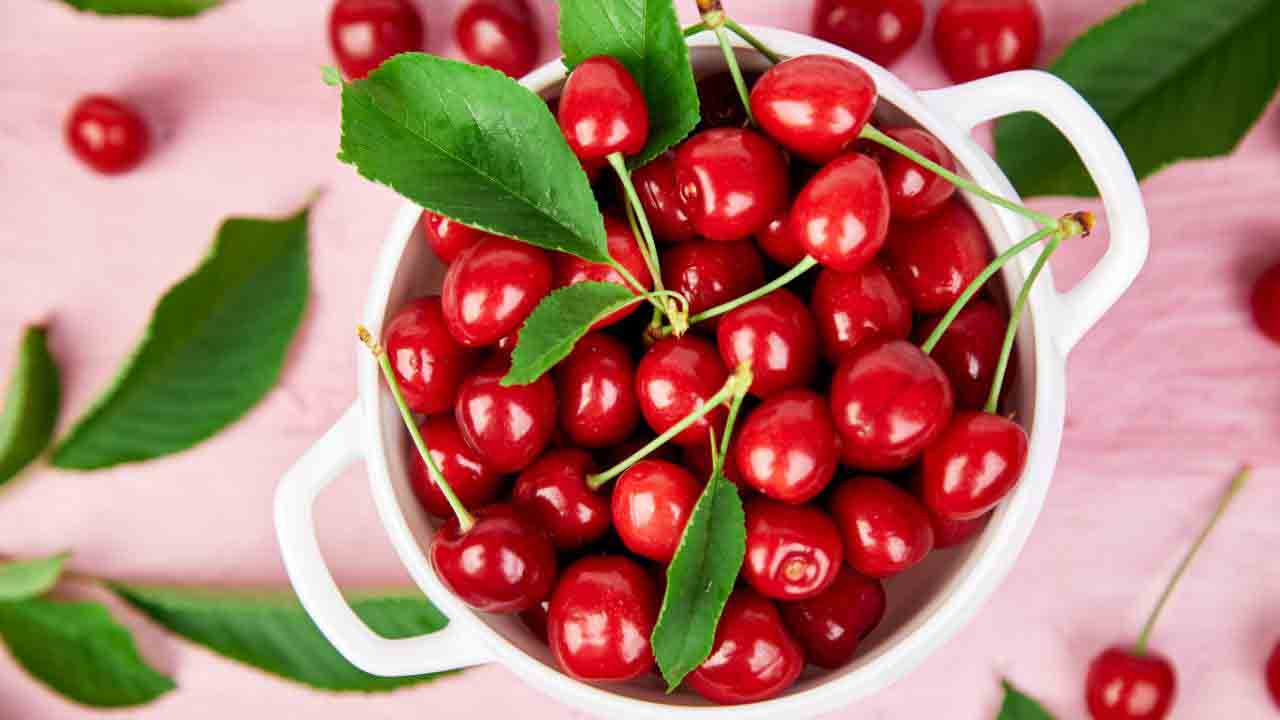
The inflorescence of European sweet cherry is umbel-shaped, with 3-4 flowers, the flowers and leaves are open, the flower buds are large scales, and the flowering period is reflexed; the total stalk is not obvious; the pedicel is 2-3 cm long, glabrous; the calyx tube is bell-shaped, Approximately 5 mm long and 4 mm wide, glabrous, sepals are long elliptic, apex rounded and obtuse, entire, approximately as long as or slightly longer than calyx tube, reflexed after flowering. The petals are white, obovate, and slightly concave at the apex. There are about 34 stamens. The style and stamens of sweet cherry are nearly as long and glabrous. The drupe is nearly spherical or ovoid, red to purple-black, 1.5-2.5 cm in diameter.
Sour cherries
Sour cherries are 10 meters tall, with a round crown, often with open and drooping branches, sometimes with shrubs that grow from the roots; the bark is dark brown with transverse lenticels and exfoliated; the tender branches are hairless, at first Green, then turned to reddish-brown. The leaves are elliptical and obovate to ovate, 5-7 cm long, 3-5 cm wide, sharply pointed at the apex, wedge-shaped at the base and often with 2-4 glands, with fine and heavy serrations on the edges, glabrous or pubescent when young. The petiole of sour cherry is 1-2 cm long, without glands or with 1-2 glands; the stipules are linear, up to 8 mm long, with glandular teeth.The inflorescence is umbel-shaped, with 2-4 flowers, the flowers and leaves are open, and the bases often have erect leaf-like scales; the flower diameter is 2-2.5 cm; the pedicel is 1.5-3.5 cm long; the calyx tube is campanulate or inverted cone-shaped, glabrous, Sepals are triangular, with glandular teeth on the sides, reflexed downward; petals are white, 10-13 mm long. Drupe oblate or spherical, 1.2-1.5 cm in diameter, bright red, pale yellow flesh, sour, sticky core; core spherical, brown, 7-8 mm in diameter. The flowering period of sour cherries is from April to May, and the fruit period is from June to July.
Cherry growth habit and growing environment and distribution
Cherries are born in hillside forests, forest margins, shrubs or grasslands. The suitable soil pH is 6.5-7.5 in a neutral environment, and it grows better on the sandy loam with a deep soil layer, loose soil texture and good ventilation.Cherries are mainly distributed in Heilongjiang, Jilin, Liaoning, Hebei, Shaanxi, Gansu, Shandong, Henan, Jiangsu, Zhejiang, Jiangxi, Sichuan and other places in China.
It is native to Europe and western Asia, mainly distributed in Albania, Algeria, Andorra, Armenia, Austria, Azerbaijan, Belarus, Belgium, Bosnia and Herzegovina, Bulgaria, Croatia, Czech Republic, Denmark, France, Georgia, Germany, Greece, Hungary, Iran, Ireland, Italy, Liechtenstein, Luxembourg, Moldova, Montenegro, Morocco, Netherlands, North Macedonia, Norway, Poland, Portugal, Romania, Southern Russia, Serbia, Slovakia, Slovenia, Spain, Sweden, Switzerland, Turkey, Ukraine, United Kingdom. It has been cultivated for a long time in Europe, Asia and North America, and was introduced and cultivated in Northeast China and North China.
Sour cherries
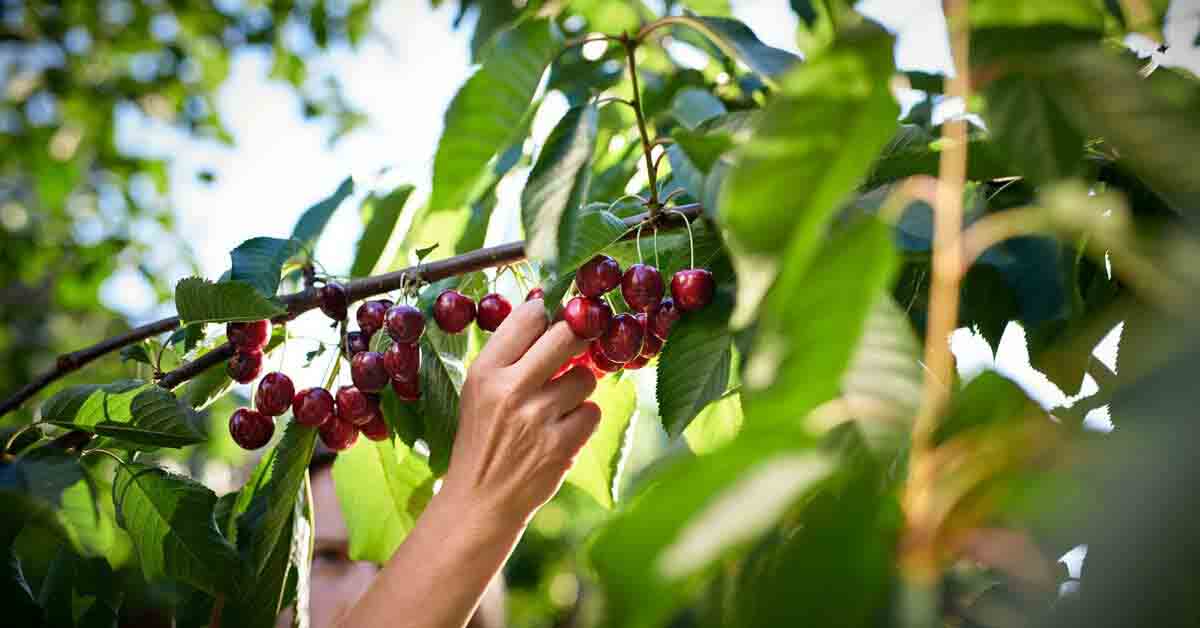
Cherries
It is native to China and distributed in Heilongjiang, Jilin, Liaoning, Inner Mongolia, Hebei, Shanxi, Shaanxi, Gansu, Ningxia, Qinghai, Shandong, Sichuan, Yunnan, Tibet. Introduced and cultivated in Europe and Japan.Cherry efficacy and role
The medicinal value of cherries
Cherries nourish blood and kidney. Indications of spleen deficiency, diarrhea, waist and leg pain, insensitive limbs, paralysis and other diseases.The nutritional value of cherries
Cherries are rich in nutrients. Each 100g of the edible part contains 88g of water, 1.1g of protein, 0.2g of fat, 0.3g of dietary dimension, 9.9g of carbohydrate, 4mg of calcium and 24mg of phosphorus. Iron 0.3 mg. 0.4 mg of zinc. 10 micrograms of carotene, 0.03 mg of vitamin B, 0.3 g of niacin, 23 mg of vitamin C, and organic acids such as citric acid and tartaric acid.Edible value of cherries
Cherries are fresh fruits with good color, aroma, taste and shape. In addition to fresh food, they can also be processed into cherry sauce, cherry juice, canned cherries and preserved fruit, wine, etc. It has a bright red color and an almond-like aroma. Enchanting. Cherries are also a better ingredient in dishes.The ornamental value of cherries
The cherry tree is beautiful in appearance, mature in early spring, luxuriant like snow, its fragrance is like honey, the leaves are like jade, the fruit is bright and bright like agate, exquisite and lovely, the flowering period is early, the flower volume is large, the fruit is many when the fruit is ripe, the fruit is red and green, It is very beautiful, and has the functions of anti-smoke, adsorption of dust, purification of air and other environmental improvements. It is a good economic tree species for gardens, courtyard greening and agricultural tourism economy.Cherry cultivation
The branches of cherries are prone to produce stem-based roots developed from adventitious roots. Using this feature, gardeners can use vegetative propagation methods such as ramets, layering, and cuttings to propagate seedlings.Cutting propagation
Site selection and site preparation: The nursery for cultivating cherry seedlings should have flat terrain, a slope less than 5 degrees, and a deep soil layer, loose soil, fertile, and good drainage. Cherry seedlings are susceptible to wilt and hardened and humid soil is severely affected. Avoid growing seedlings on the ground where the previous crop is cherry seedlings or cherry orchards. Before land preparation, 3000-4000 kilograms of high-quality soil fertilizer and 3-4 kilograms of ferrous sulfate should be applied per acre, and deep plowing and harrowing should be carried out to form a seedling border with a width of 1.0-1.2 meters and a length of fewer than 50 meters. High-border seedlings can be used in places where the terrain is flat and water is prone to accumulation in summer.Cutting cuttings
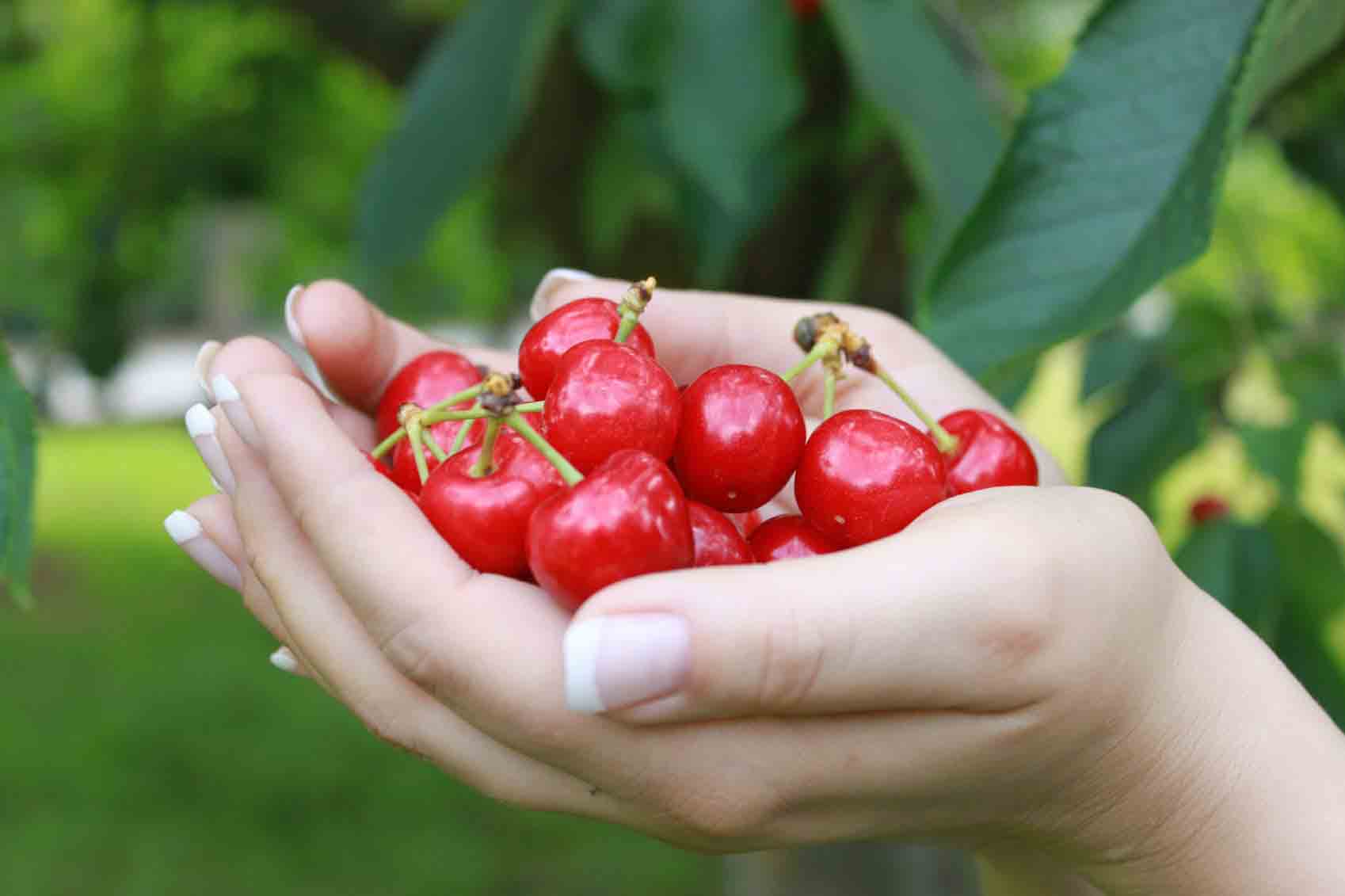
Hardwood cuttings should be carried out near spring when the sap is flowing. Spring cuttings can be covered with soil or film. When mulching, the upper end of the cuttings can be wax-sealed 2 cm, and the buds are exposed out of the film to delay germination. Higher ground temperature is conducive to rooting and higher survival rates. In order to improve the emergence rate, the lower end of the cuttings can be soaked with 100 mg/L ABT rooting powder or 50-100 mg/L indolebutyric acid solution for 4-5 hours before cutting, and the cuttings shall be taken out immediately.
Seedling Management
Cherry seedlings can take root 20-30 days after insertion, watering and topdressing when new shoots are 20 cm, to promote seedling growth. Before the rainy season comes, cultivate 5 cm of soil at the base of the seedlings. In autumn, the height of the seedlings can reach 80-100 cm, and the thickness is 0.6-0.8 cm, which can reach the standards of grafting and nursery.Grafting reproduction
Cherry seedlings have serious virus disease, and mountain cherry seedlings are often used as rootstocks. In the growing season of cherries, the grafting method is adopted or with xylem inlaid bud grafting, and the grafting before germination in spring adopts splitting, cutting, abdominal cutting and tongue grafting.Management of grafted seedlings
Rain or watering after grafting of cherries may cause gum flow and affect survival. Therefore, do not water for 15-20 days before and after grafting. In summer, the budding should be loosened in time after the budding is alive to prevent the binding material from being pulled into the cortex and causing glue flow. The loosening should be done when the budding is 10 cm long.Management of budding seedlings
The anvil can be cut when the cherry budding seedlings are close to the bud in spring. If the anvil is cut too early, the anvil stake is easy to drain downwards and the cherry buds will die. Cut the anvil 3-5 cm above the bud. When the grafted buds are 20-30 cm long, the pillars should be set up in time, and then tied 2-3 times. When the height of the seedlings is 30-40 cm, you can leave 20-30 cm for topping, and the cherry buds can form in the next year, and they can bloom and bear fruit in the third year.Management of grafted seedlings
The grafted seedlings should be timely removed from the soil. Use a plastic bag to pack wet sawdust and moisturize it. When the buds are 5 cm long, they should be open to the air. Spring drought often occurs in Shandong and other places. In order to promote the healthy growth of seedlings in the early stage, timely irrigation, top dressing, and weeding should be carried out according to rainfall conditions to promote seedling maturity.Latest Updated
- Benefits of Bugleweed - 7 Science-backed Health Benefits
- Bugleweed Dangers & Side Effects - Is It Poisonous?
- How to Plant Evergreen Trees - What You Should Know
- When to Plant Evergreens - Grow Guide for Evergreen Trees
- 12 Wonderful Evergreen Shrubs for Your Garden
- 12 Popular Evergreen Plants with Pictures for Beginners
- When And How To Prune A Lilac Bush Like a Pro
- How to Grow & Care for Lilac Vine (Hardenbergia Violacea)
- Japanese Lilac Tree (Syringa Reticulata) Care & Propagation Guide
- Shumard Oak Pros and Cons - What to Know
Popular Articles
- Winter maintenance of Antirrhinum Majus
- How to Grow Terminalia Mantaly Tree
- How to Grow and Care for Crossostephium Chinense
- How to grow Antirrhinum Majus in spring
- Peristeria Elata (Dove Orchid) Profile: Info & Care Guide
- Underwatered Snake Plant (Sansevieria Trifasciata) - Signs And How To Fix
- How to Care for Brazilian Jasmine Plant (Mandevilla Sanderi)
- How to Grow & Care for Graptopetalum Purple Delight in Summer
- Rosa Chinensis (China Rose): Plant Growing & Care Tips
- How to Care for Baby Sun Rose (Aptenia Cordifolia)